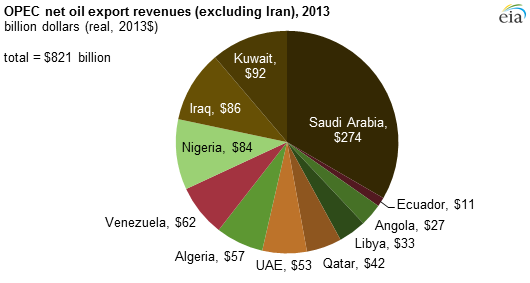Содержание

And all these new capacities or assets are yet to become operational. Get instant access to video lessons taught by experienced investment bankers. Learn financial statement modeling, DCF, M&A, LBO, Comps and Excel shortcuts. High Turnover → The company is implied to be purchasing long-term assets efficiently.
Our goal is to deliver the most understandable and comprehensive explanations of climate and finance topics. Carbon Collective is the first online investment advisor 100% focused on solving climate change. We believe that sustainable investing is not just an important climate solution, but a smart way to invest. Unlike net income, net sales only take into account expenses that are directly related to the consumers. The DuPont analysis is a framework for analyzing fundamental performance popularized by the DuPont Corporation. The ratio does not take into account the difference in accounting methods used by different companies.
The asset turnover ratio, on the other hand, consider total assets, which includes both current and non-current assets. However, no one rule defines what a good fixed asset turnover ratio is. As different industries have different mechanics and dynamics, they all have a different good fixed asset turnover ratio.
Formula to Calculate Fixed Assets Ratio
All of these are depreciated from the initial asset value periodically until they reach the end of their usefulness or are retired. Current ratio refers to a technique that measures the capability of a business to meet its short-term obligations that are due within a year. The current ratio considers the weight of the total current assets versus the total current liabilities. As per the calculation result, the ratio is 50%, and compared to the industry average, ABC is performing exceptionally well.
- Allowances are cost reductions that customers receive for special reasons.
- They are considered as long-term or long-living assets as the Company utilizes them for over a year.
- What constitutes a good fixed asset turnover ratio is difficult to prescribe.
- While improving its asset turnover ratio and trying to maintain consistent cash flows and other business fundamentals.
Analyzing how much other firms in the same industry have invested in similar assets to compare the company’s investment ratios. It may also track annual investments in each asset and create a pattern to compare year-on-year trends. To calculate the ratio in Year 1, we’ll divide Year 1 sales ($300m) by the average between the Year 0 and Year 1 total asset balances ($145m and $156m). As with all financial ratios, a closer look is necessary to understand the company-specific factors that can impact the ratio. And such ratios should be viewed as indicators of internal or competitive advantages (e.g., management asset management) rather than being interpreted at face value without further inquiry. The formula divides the net sales of a company by the average balance of the total assets belonging to the company (i.e., the average between the beginning and end of period asset balances).
What are Fixed Assets?
Investors and creditors use this formula to understand how well the company is utilizing their equipment to generate sales. This concept is important to investors because they want to be able to measure an approximate return on their investment. This is particularly true in the manufacturing industry where companies have large and expensive equipment purchases. Creditors, on the other hand, want to make sure that the company can produce enough revenues from a new piece of equipment to pay back the loan they used to purchase it.
The ratio can be used by investors and analysts to compare the performances of companies operating in similar industries. This efficiency ratio compares net sales to fixed assets and measures a company’s ability to generate net sales from its fixed-asset investments, namely property, plant, and equipment (PP&E). However, they differ in terms of their calculation, relevance, and interpretation. The asset turnover ratio measures the efficiency of an organization in using its entire asset base to generate revenue.
A Small Business Guide to Ratio Analysis – The Motley Fool
A Small Business Guide to Ratio Analysis.
Posted: Wed, 18 May 2022 07:00:00 GMT [source]
Fixed asset turnover ratios widely vary by industry and company size. Therefore, there is no single benchmark all companies can use as their target fixed asset turnover ratio. Instead, companies should evaluate what the industry average is and what their competitor’s fixed asset turnover ratios are.
What is Asset Turnover Ratio?
That means, by measuring the fixed asset turnover ratio formula, we can determine if the company is using its existing physical assets to maximize gains. A greater ratio suggests that management is making better use of its fixed assets. The ratio of company X can be compared with that of company Y because both the companies belong to same industry.

With the best trading courses, expert instructors, and a modern E-learning platform, we’re here to help you achieve your financial goals and make your dreams a reality. Okay now let’s take a look at a quick example so you can understand clearly how to compute this ratio in real life. The main disadvantage of Fixed Assets Turnover, mainly used as performance measurement, is that it motivates the manager to use the old assets instead of replacing them. Fixed Assets Turnover is a financial performance indicator that is popularly used to measure the performance of the entities that we have just mentioned above. ABC is a manufacturing company producing clothes using labor and machine.
Asset Turnover Ratio
All such information is provided solely for convenience purposes only and all users thereof should be guided accordingly. The ratio does not take into account the quality of a company’s assets. No information can be gleaned from a high FAT ratio about a company’s capacity to produce reliable earnings or cash flows.
Companies with a higher FAT ratio are generally considered to be more efficient than companies with low FAT ratio. Let’s take an example to understand the calculation of the Fixed Asset Turnover Ratio in a better manner. For example, inventory purchases or hiring technical staff to service customers is cheaper than major CapEx. From Year 0 to the end of Year 5, the company’s net revenue expands from $120 million to $160 million, whereas its PP&E declined from $40 million to $29 million.
Divide total sales or revenue by the average value of the assets for the year. Locate total sales—it could be listed as revenue—on the income statement. Locate the value of the company’s assets on the balance sheet as of the start of the year. But it is important to compare companies within the same industry in order to see which company is more efficient. When considering investing in a company, it is important to note that the FAT ratio should not perform in isolation, but rather as one part of a larger analysis. This will give you a complete picture of the company’s financial health.
A high turn over indicates that assets are being utilized efficiently and large amount of sales are generated using a small amount of assets. It could also mean that the company has sold off its equipment and started to outsource its operations. Outsourcing would maintain the same amount of sales and decrease the investment in equipment at the same time. An increase in the ratio over previous periods can, on the other hand, suggest the company is successfully turning its investment in its fixed assets into revenue.
It is better to use this ratio and analysis within peers and the same industry group. When the business is underperforming in sales and has a relatively high amount of investment in fixed assets, the FAT ratio may be low. Fixed assets are tangible long-term or non-current assets used in the course of business to aid in generating revenue. These include real properties, such as land and buildings, machinery and equipment, furniture and fixtures, and vehicles. They are subject to periodic depreciation, impairments, and disposition.
You can calculate it by deducting the total depreciation or liabilities from the total amount paid for all the fixed assets. On the other hand, the creditors use the ratio to check if the company has the potential to generate adequate cash flow from the newly purchased equipment to pay back the loan used to buy it. This ratio is typically useful in the case of the manufacturing industry, where companies have large and expensive equipment purchases. It indicates that there is greater efficiency in regards to managing fixed assets; therefore, it gives higher returns on asset investments. This is especially true for manufacturing businesses that utilize big machines and facilities. Although not all low ratios are bad, if the company just made some new large purchases of fixed assets for modernization, the low FAT may have a negative connotation.
Likewise, selling off assets to prepare for declining growth will artificially inflate the ratio. Also, many other factors can affect a company’s asset turnover ratio during periods shorter than a year. The FAT ratio measures a company’s efficiency to use fixed assets for generating sales.
You can easily calculate the Asset Turnover Ratio using Formula in the template provided. It’s important to remember that a high or low ratio doesn’t automatically imply poor performance. A few other external variables will also influence this determination. We strive to empower readers with the most factual and reliable climate finance information possible to help them make informed decisions. Our writing and editorial staff are a team of experts holding advanced financial designations and have written for most major financial media publications. Our work has been directly cited by organizations including MarketWatch, Bloomberg, Axios, TechCrunch, Forbes, NerdWallet, GreenBiz, Reuters, and many others.
The asset turnover ratio uses total assets instead of focusing only on fixed assets as done in the FAT ratio. Using total assets acts as an indicator of a number of management’s decisions on capital expenditures and other assets. The fixed asset turnover ratio reveals how efficient a company is at generating sales from its existing fixed assets. The fixed asset turnover ratio is most useful in a “heavy industry,” such as automobile manufacturing, where a large capital investment is required in order to do business. In other industries, such as software development, the fixed asset investment is so meager that the ratio is not of much use.
Can the fixed asset turnover be negative?
We now have all the required inputs, so we’ll take the net sales for the current period and divide it by the average asset balance of the prior and current periods. On the flip side, a turnover ratio far exceeding the industry norm could be an indication that the company should be spending more and might be falling behind in terms of development. In practice, the ratio is most helpful when compared to that of industry peers and tracking how the ratio has trended over time. Hence, it is often used as a proxy for how efficiently a company has invested in long-term assets. Next, a common variation includes only long-term fixed assets (PP&E) in the calculation, as opposed to all assets.
INVESTMENT BANKING RESOURCESLearn the foundation of Investment banking, financial modeling, valuations and more. The management needs to determine the right amount of investment in each asset. Days payable outstanding is a ratio used to figure out how long it takes a company, on average, to pay its bills and invoices.
